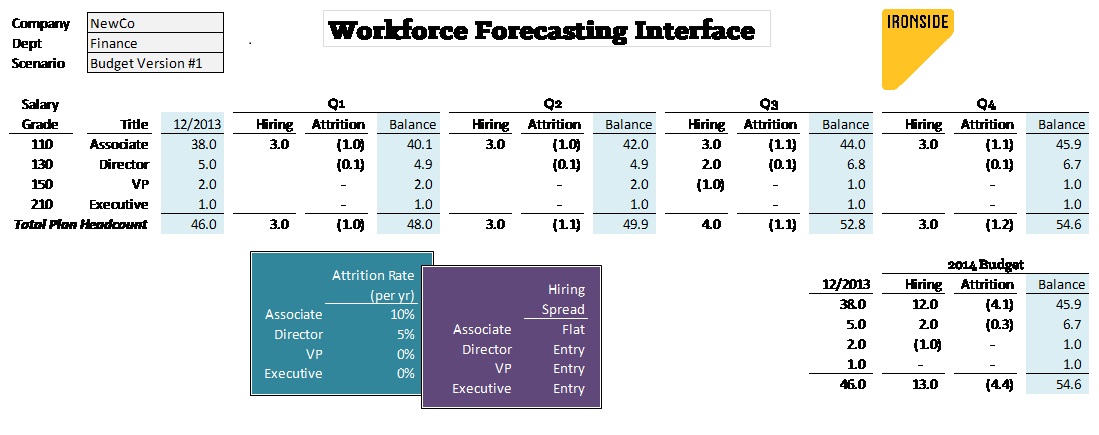Driver-Based Compensation Planning in IBM Cognos TM1
Employee compensation accounts for most of the expense base for service-oriented companies. The true ‘driver’ for this expense revolves around workforce planning. Creating a projection that matches the size of the workforce to the demands of the business can be a difficult exercise. Like most complex tasks, breaking it down into manageable components makes it easier to implement. This is the core principle behind driver-based compensation planning.
The best model designs mirror the operational realities of the business. Workforce planning starts with an analysis of current capacity (FTE) and compares this capacity to forecasted, business-driven capacity.
The design above provides the finance department manager with a solution interface that allows him/her to input and compare hiring plans by quarter and make assumptions about attrition and the timing of hires. Other assumptions around hiring lag (i.e. the time between position posting and start date) can also be integrated to increase the workforce forecast accuracy.
To fully leverage this driver-based compensation approach, departmental managers should only be responsible for the entry of head count information. All of the components of compensation expense can be integrated into the modeling environment and be driven by this headcount information:
- Salaries are calculated by leveraging grade-based tables
- Merit increases and bonuses are calculated based upon point-in time head count and assumptions by grade.
- Benefits, recruiting, fringes, and taxes are all calculated based upon a single set of assumptions and business logic.
Ironside has also helped companies expand this headcount-based, driver-based approach in areas beyond just compensation expense. Expenses such as office supplies and occupancy can also use headcount as a driver for modeling.
IBM Cognos TM1 models thrive with a driver-based compensation approach because they utilize the platform’s full in-memory capabilities, leading to rapid scenario development. As you can see above, a single, robust, headcount-based expense planning model design can drive 70% or more of the entire budget and directly tie budget-to-actual variances on the P&L back to workforce planning.
If you are interested in learning more about Compensation Planning in IBM Cognos TM1, you can watch our TM1 experts discuss the challenges of and options for cube design. This on-demand webinar includes a demonstration of Ironside’s TM1 compensation planning solution.





